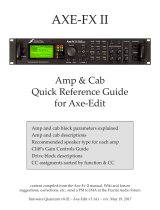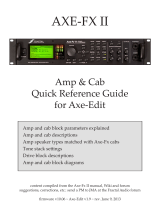Catalinbread Topanga Burnside Operating instructions
- Type
- Operating instructions
Catalinbread Topanga Burnside is a versatile reverb and tremolo pedal inspired by the classic Fender 6G15 spring reverb unit. It features controls for dwell, tone, mix, volume, and trem, allowing you to dial in a wide range of reverb and tremolo effects. The dwell knob controls the intensity of the reverb, while the tone knob adjusts the brightness of the reverb signal. The mix knob blends your dry signal with the reverb signal, and the volume knob controls the overall output level.
Catalinbread Topanga Burnside is a versatile reverb and tremolo pedal inspired by the classic Fender 6G15 spring reverb unit. It features controls for dwell, tone, mix, volume, and trem, allowing you to dial in a wide range of reverb and tremolo effects. The dwell knob controls the intensity of the reverb, while the tone knob adjusts the brightness of the reverb signal. The mix knob blends your dry signal with the reverb signal, and the volume knob controls the overall output level.




-
 1
1
-
 2
2
-
 3
3
-
 4
4
Catalinbread Topanga Burnside Operating instructions
- Type
- Operating instructions
Catalinbread Topanga Burnside is a versatile reverb and tremolo pedal inspired by the classic Fender 6G15 spring reverb unit. It features controls for dwell, tone, mix, volume, and trem, allowing you to dial in a wide range of reverb and tremolo effects. The dwell knob controls the intensity of the reverb, while the tone knob adjusts the brightness of the reverb signal. The mix knob blends your dry signal with the reverb signal, and the volume knob controls the overall output level.
Ask a question and I''ll find the answer in the document
Finding information in a document is now easier with AI
Related papers
Other documents
-
Lexicon MPX G2 User manual
-
Line 6 Amp Farm User guide
-
 Fractal Audio AXE-FX II Quick Reference Manual
Fractal Audio AXE-FX II Quick Reference Manual
-
Dynamic 2040 User manual
-
Eventide H7600 Owner's manual
-
 Fractal AXE-FX II Quick Reference Manual
Fractal AXE-FX II Quick Reference Manual
-
Eventide H7600 Owner's manual
-
Fender 814-050X-000 User manual
-
 HOTONE Ampero User manual
HOTONE Ampero User manual
-
Fender 57 deluxeTM User manual







